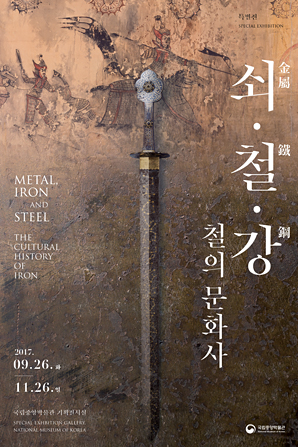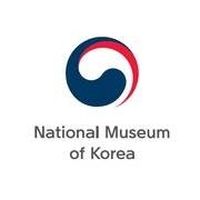Exhibition: "Metal, Iron and Steel: the Cultural History of Iron"
 The National Museum of Korea, an ASEMUS member, presents the exhibition “Metal, Iron and Steel: the Cultural History of Iron", the purposes of which are to ascertain the role and value of iron in human history and shed light on the development of iron in Korea’s history. The exhibition examines the process of how iron has become the most actively used metal in our lives.
The exhibition displays 735 pieces in 429 categories that show the iron culture of Korea, China and Japan in East Asia as well as in West Asia. It goes over various aspects of iron in history from the perspectives of life and power. Since iron emerged as a symbol of power, it has infiltrated into the lives of people and is used in the daily lives of the modern industrialised society.
"Metal, Iron and Steel: the Cultural History of Iron" is made up of three parts:
The National Museum of Korea, an ASEMUS member, presents the exhibition “Metal, Iron and Steel: the Cultural History of Iron", the purposes of which are to ascertain the role and value of iron in human history and shed light on the development of iron in Korea’s history. The exhibition examines the process of how iron has become the most actively used metal in our lives.
The exhibition displays 735 pieces in 429 categories that show the iron culture of Korea, China and Japan in East Asia as well as in West Asia. It goes over various aspects of iron in history from the perspectives of life and power. Since iron emerged as a symbol of power, it has infiltrated into the lives of people and is used in the daily lives of the modern industrialised society.
"Metal, Iron and Steel: the Cultural History of Iron" is made up of three parts:
- Part 1, "Iron Meets Human", focuses on the human effort of making stronger iron and the social phenomena generated by it. Since humans started using iron from nature, iron developed in various forms by region. The emergence and development of iron culture are different in the East and the West. Through examining historical events, the section seeks to discover the role and value of iron in world history.
- Part 2, entitled "Iron Makes Power", describes how the emergence of iron has led to increased productivity, which led rulers to want to own more iron. The possession of iron symbolised power. This symbolism of iron had appeared in various forms from the Prehistoric Age to Joseon Dynasty. Struggles to maintain power brought about wars. The increased productivity through iron can be said to mean ”growth“ while the war caused by power means “destruction”. Part 2 goes down to how iron-birthed power created numerous contradictory events.
- Finally, Part 3, "Iron Enters Life", explains that iron has been used for everyday tools, building materials, religious icons, colouring materials, etc. Folk paintings from the Joseon Dynasty contain many iron tools used for basic living, ancestral rites and rituals. The property of iron, which is rough and rugged, is used to express the beauty of iron Buddha and the original color of iron. Part 3 shows how people tried to use iron to achieve their purposes.
Similar content
02 Aug 2016 - 23 Oct 2016
14 Aug 2018 - 28 Oct 2018
from - to
28 Oct 2011 - 12 Feb 2012
22 Apr 2017 - 23 Jul 2017
posted on
06 Sep 2010
06 Aug 2014

